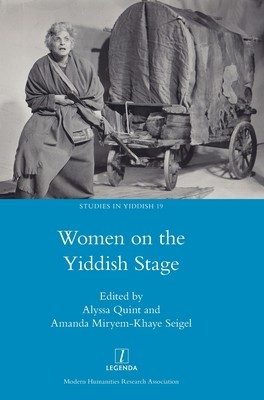
- We will send in 10–14 business days.
- Publisher: Legenda
- ISBN-10: 1839541369
- ISBN-13: 9781839541360
- Format: 17 x 24.4 x 2.1 cm, kieti viršeliai
- Language: English
- SAVE -10% with code: EXTRA
Women on the Yiddish Stage (e-book) (used book) | bookbook.eu
Reviews
Description
The integration of women into public Jewish performance (Yiddish-language theater by 1877 and Hebrew-language theater by about 1918) was a revolution in modern Jewish culture. While a great deal of seasoned Yiddish-speaking male talent preexisted theater in the form of cantors, choristers, and tavern singers, East European Jewish women had no experience participating in public Jewish performance. From the theater's first days, women assumed positions of authority, security, and visibility in great numbers. Rapidly, by the 1890s, when the center of the Yiddish theater shifted from cities throughout Romania and the Russian Empire where it first launched in the late 1870s to cities across the globe - including London, Buenos Aires, and New York City by the turn of the century - substantial numbers of female Yiddish actors enjoyed celebrity on par with their male counterparts.
Women on the Yiddish Stage presents an array of scholarly essays that challenge the existing historical accounting of the modern Yiddish theater; highlight pioneering artists, creators, and impresarios; and map sources and methodologies of this rich area of forgotten history.
EXTRA 10 % discount with code: EXTRA
The promotion ends in 23d.22:28:15
The discount code is valid when purchasing from 10 €. Discounts do not stack.
- Publisher: Legenda
- ISBN-10: 1839541369
- ISBN-13: 9781839541360
- Format: 17 x 24.4 x 2.1 cm, kieti viršeliai
- Language: English English
The integration of women into public Jewish performance (Yiddish-language theater by 1877 and Hebrew-language theater by about 1918) was a revolution in modern Jewish culture. While a great deal of seasoned Yiddish-speaking male talent preexisted theater in the form of cantors, choristers, and tavern singers, East European Jewish women had no experience participating in public Jewish performance. From the theater's first days, women assumed positions of authority, security, and visibility in great numbers. Rapidly, by the 1890s, when the center of the Yiddish theater shifted from cities throughout Romania and the Russian Empire where it first launched in the late 1870s to cities across the globe - including London, Buenos Aires, and New York City by the turn of the century - substantial numbers of female Yiddish actors enjoyed celebrity on par with their male counterparts.
Women on the Yiddish Stage presents an array of scholarly essays that challenge the existing historical accounting of the modern Yiddish theater; highlight pioneering artists, creators, and impresarios; and map sources and methodologies of this rich area of forgotten history.


Reviews